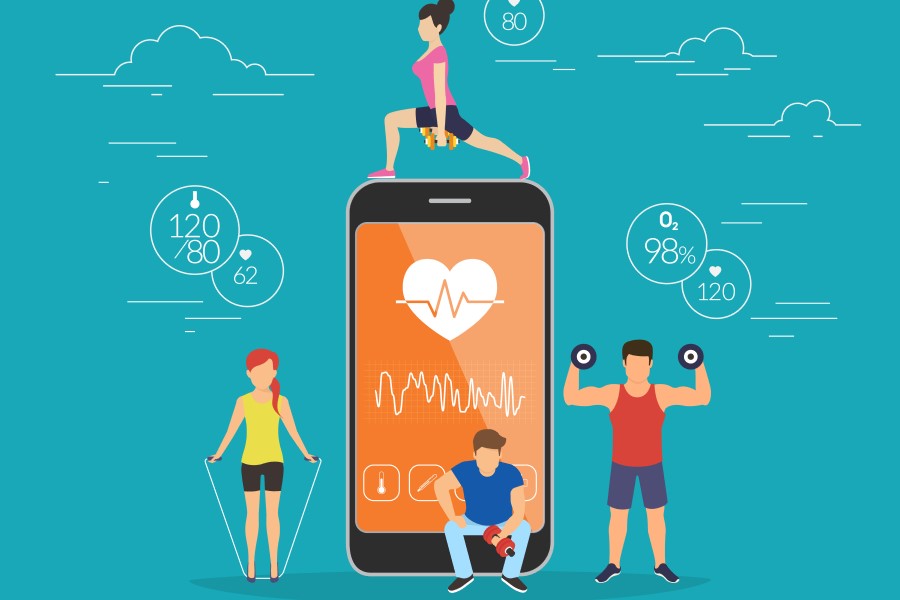How technology and data analysis is changing the way businesses manage physical wellbeing

1. Activity tracking
Although it’s not a new concept and ‘step challenges’ having been around in the workplace for some time, technology is enabling an exciting revolution where it is no longer just a pedometer attached to your hip that tracks your activity. The newest products can collate data from multiple sources including Fitbits, Strava, Apple Health and Garmin Connect, to ensure you have a full picture of all your activity in one place.
2. Gamification
In all likelihood, having all this activity data will appeal to a minority of people who are already keeping fit and healthy. The challenge is how do you get the masses to engage in activity tracking – Gamification. Accumulating points, gaining rewards and recognition coupled with healthy competition between work colleagues can create a fun and enjoyable way to allow all employees to engage in a corporate challenge or virtual race.
3. Broader health tracking
It is not just activity that technology can track today. Your heart rate, sleep patterns and even the pollution you are exposed to on a day-to-day basis can provide insightful information about your people’s health needs. Imagine a scenario where, based on your location throughout your working day, an application can send you a notification at the end of the day explaining how much pollution you were exposed to and what to eat or drink to counteract the effects...imagine no longer. This capability exists today.
4. Genetic profiling – ultra personalisation
If you have not come across this exciting new science yet, don’t worry, it is very new and the science is evolving on a daily basis. However, to give an insight into its credibility, the NHS is currently funding a Genome project costing more than £600 million and 17 million people in the US have already been profiled (the number is expected to reach 100 million before 2024).
Your DNA is what you are born with and makes you who you are. Your genetic make-up can also tell you a lot about how you will react to certain food types, whether you have positive or negative reactions to caffeine and what type of exercise is going to best suit you as a person. For the individual this information could lead to significant improvements in both physical and mental health.
Having taken one of these tests myself, I have started exercising in a different way and including foods in my diet to help with natural deficiencies that are having a significant impact on my energy and focus each day. As it evolves this technology will look towards gene expression or epigenetics (the part of your genetic make-up you can actually change) to take it to a place where the possibilities are endless.
5. Wellness analytics
How will you know if the above initiatives that you launch are effective? Where should you turn our attention next? Are your people any healthier? All questions that can be answered and solved with an aggregation of the data into an analytics platform. Whether it’s measuring participation and engagement in your wellbeing initiatives or looking for ways to lower your employee benefit insurance costs, the above data coupled with insurance claims analysis, as an example, can start to change the way you think about the health benefits you offer. If implemented correctly, the data available can lead to insights that will;
- Show you your least healthy (and probably least productive) office location, teams or even country.
- Pinpoint poor engagement or cultural hotspots by location, demographic or team.
- Highlight teams or individuals who may be untapped potential in the organisation.
- Provide you with information to support lower insurance costs.
- Support the business case to change the design of your reward and benefits offering.
Summary
Technology and science are evolving at pace and the possibilities are incredibly exciting across the broad spectrum of employee wellbeing. There will naturally be some concern regarding the use of employee data in some of the ways described, but I believe it’s time for us to be brave and embrace the revolution that our people are already utilising in their personal consumer lives. The key to success will be bringing people on the journey and providing transparency around how the data gets used and managed with the ultimate goal of helping them lead happier and healthier lives.
I personally look forward to the day that we do not measure the success of our reward and benefits schemes on login rates and take-up but on whether our people and our organisation have become more ‘well’.
The author is Nick McClelland, sales and commercial director at JLT Employee Benefits.
This article was provided by JLT Employee Benefits.
In partnership with






